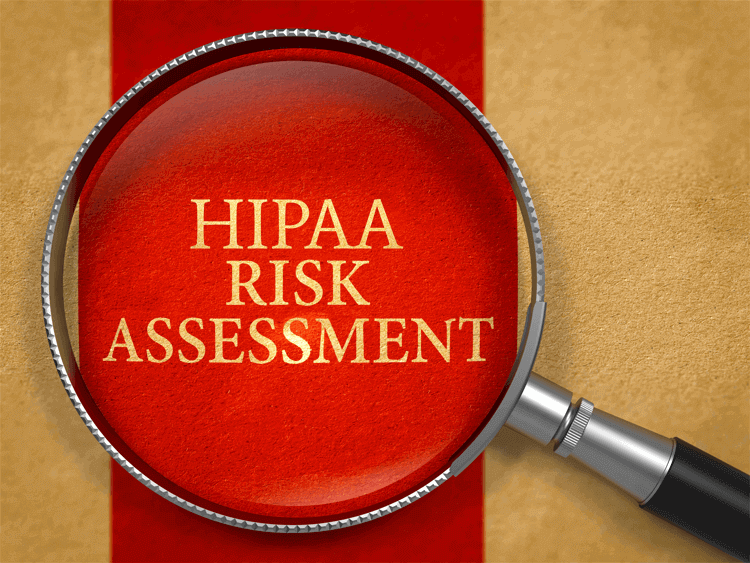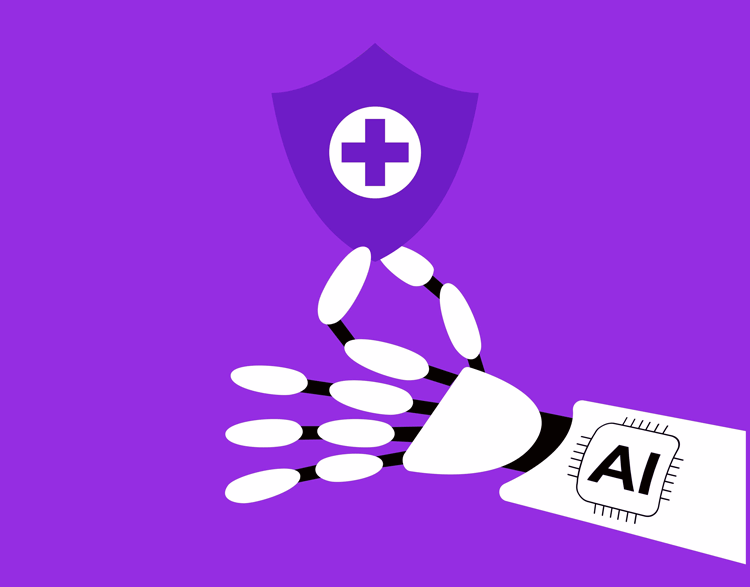HIPAA Risk Assessment: A Comprehensive Guide
Healthcare organizations need to protect sensitive patient information. One way to do this is by performing a HIPAA Risk Assessment. This assessment helps you find system weaknesses that could lead to data breaches or compliance problems.
It is required under the Health Insurance Portability and Accountability Act (HIPAA) and is critical for avoiding fines and security risks.
In this guide we will walk through the steps to assess risks and keep your organization compliant.

What is a HIPAA Risk Assessment?
Simply put, a HIPAA Risk Assessment helps healthcare organizations identify potential risks to patient information. It reviews how sensitive data is collected, stored, and shared to uncover security gaps. This process is required by HIPAA to ensure proper protections are in place to prevent data breaches or unauthorized access. Failure to have a plan in place can lead to consequences such as fines and even jail time for corporate officers in some cases.
Why are HIPAA Risk Assessments Important?
Conducting a HIPAA Risk Assessment is necessary for several reasons:
- Discovering Security Weaknesses: According to the IBM Security Cost of a Data Breach Report, shared via Cybersecurity Dive, "Compromised credentials claimed the top initial attack vector and root cause of data breaches this year, accounting for 16% of the breaches IBM studied. Phishing attacks were a close second at 15% of the breach cases studied." A risk assessment helps identify these weaknesses before they can lead to data breaches.
- Preventing Data Breaches: By addressing risks, you reduce the chance of costly breaches. According to the IBM Security Cost of a Data Breach Report, shared via HIPAA Journal, "the average data breach cost has increased to $4.45 million ($165 per record), with data breaches in the United States being the costliest at an average of $9.48 million, up 0.4% from last year."
- Avoiding Fines: Regular assessments help maintain compliance with HIPAA, avoiding penalties for non-compliance.
- Protecting Patient Trust: Safeguarding patient data builds trust and protects your organization's reputation. In a survey conducted by Semafone and shared via Campus Safety, it was found that "66% of patients said they would leave their healthcare provider if their payment information or PII was compromised in a data breach caused by poor security measures, and 90% believe healthcare providers should face financial penalties for not having proper protections in place."
How to Conduct a HIPAA Risk Assessment in 6 Steps
Follow these six steps to perform a HIPAA Risk Assessment and ensure compliance:
-
Identify Where PHI is Stored, Received, or Transmitted
Begin by locating all areas where Protected Health Information (PHI) is handled, such as databases, devices, and third-party systems.
-
Assess Potential Risks and Vulnerabilities
Review potential threats that could lead to unauthorized access. These might include external risks, like cyberattacks, or internal risks, such as human error.
-
Evaluate Existing Security Measures
Examine your current security controls, including encryption, access restrictions, and monitoring systems, to make sure they are sufficient to protect PHI.
-
Determine Likelihood and Impact of Each Risk
Assess how likely each risk is to occur and the potential consequences if it does. Consider the financial, legal and reputational damage.
-
Implement Risk Mitigation Measures
Take action to reduce or eliminate the risks you've identified. This could include updating security policies, improving staff training, or upgrading technology to have a more robust security net.
-
Document the Assessment and Regularly Update It
Keep thorough documentation of the risk assessment process and update it regularly (such as quarterly) -- especially when new technologies, systems, or threats emerge.
For additional steps, take a look at The HIPAA Journal's guide on risk assessments.
HIPAA Risk Assessment Checklist
Performing a HIPAA risk assessment can be complex, but having a clear checklist makes it easier to make sure all critical steps are covered. Use the following checklist to guide your assessment and ensure compliance.
PHI Sources
- Identify all locations where PHI is stored, such as databases, servers, and backup systems.
- List devices where PHI is accessed or processed (e.g., laptops, smartphones, tablets).
- Include third-party systems that store or process PHI, such as cloud services and vendors.
- Be sure you account for mobile devices, emails, and any remote access to PHI.
- Create a centralized inventory of all PHI storage and transmission points.
Identify Potential Risks
- All potential external threats (e.g., cyberattacks, malware, unauthorized access).
- Identify internal risks such as human error, improper data handling, or accidental disclosures.
- Review any physical risks to PHI, such as data theft, loss, or damage to devices.
- Assign a priority level (high, medium, low) to each risk based on its potential to occur and the possible damage it could cause.
Review Current Security
- Evaluate the strength of your encryption methods for data at rest and in transit.
- Check access controls to allow only authorized personnel access to PHI.
- Review the effectiveness of your security monitoring and alert systems.
- Identify any outdated or insufficient controls that need to be updated to meet HIPAA standards.
- Document all security measures currently in place.
Assess Each Risk
- Analyze the probability of each risk happening (e.g., frequent cyberattacks vs. rare internal mistakes).
- Determine the financial consequences of each risk, such as potential fines or litigation costs.
- Assess the reputational impact if a breach were to occur, considering how it might affect patient trust.
- Include legal implications, such as penalties for non-compliance or data breaches.
- Assign a likelihood and impact score for each risk (e.g., 1-5 scale).
Plan and Implement Risk Mitigation
- Develop a detailed plan to address high-priority risks.
- Update your security policies to address identified gaps, such as stronger access controls or better encryption.
- Schedule and conduct staff training on HIPAA compliance and data security best practices.
- Upgrade technology, such as firewalls, intrusion detection systems, and data encryption software.
- Assign responsibility to individuals or teams for implementing each mitigation action.
- Set deadlines for completing risk mitigation actions and review progress regularly.
Document and Regularly Review
- Thoroughly document all findings, risk assessments, and mitigation steps taken.
- Create a formal risk assessment report to meet HIPAA compliance requirements.
- Set a schedule for periodic reassessments (e.g., quarterly or annually) and after any major changes to systems or processes.
- Maintain ongoing monitoring of emerging risks, including new technologies or changes in regulations.
- Update your risk mitigation plan and security policies as needed.
Download a free PDF version of the HIPAA risk assessment checklist to print or interact with.
When is a HIPAA Risk Assessment Required?
A HIPAA Risk Assessment is not a one-time task. It is required at specific intervals and in particular situations to ensure continuous compliance. Here's when it should be conducted:
- Annually: It's a best practice to conduct an assessment once a year to stay up to date with evolving threats.
- When New Technology is Implemented: If your organization adopts new systems, software, or equipment that handles PHI, a fresh risk assessment should be performed.
- After a Data Breach or Security Incident: If there is any breach of PHI, an immediate risk assessment is necessary to understand the cause and prevent future issues.
- Significant Operational Changes: When there are major changes in operations, such as new business processes or staff restructuring, an updated assessment is needed.
Learn More: HIPAA Audits: What They Are, What to Expect, What to Do
HIPAA Risk Assessment for Help Desk and IT
Help Desk and IT teams are essential to protecting patient data and maintaining HIPAA compliance. They manage the systems that store and transmit Protected Health Information (PHI) and are often responsible for enforcing security measures. Below are 3 key tasks that should always be top of mind for your teams:
-
Monitor Access Controls
IT must permit only authorized personnel to have access to sensitive data. Regularly reviewing access permissions should be on the checklist to prevent unauthorized access.
-
Patch and Update Systems
Ensuring systems are up-to-date with the latest patches is essential to prevent vulnerabilities. Incorporating timely software updates into the checklist keeps systems secure.
-
Respond to Security Incidents
If a breach occurs, IT teams should follow protocols outlined in the HIPAA risk assessment checklist to respond promptly and mitigate damage.
Giva's cloud-based Help Desk Software is HIPAA compliant, providing hospitals and healthcare organizations in the U.S. with added peace of mind regarding data storage, transfer, and security. It reduces the burden on IT and customer service teams to manually implement safeguards as part of their day-to-day tasks.
Learn more to see if Giva's cloud-based Help Desk Software is the right fit for your organization.
HIPAA Risk Assessment FAQs
Here are some common questions about HIPAA Risk Assessments:
-
How often should a HIPAA risk assessment be conducted?
It's recommended to perform an assessment annually, but one should also be conducted when there are significant changes, such as new technology, systems, or after a security incident.
-
Can a HIPAA risk assessment be outsourced?
Yes, many organizations hire third-party experts to conduct their risk assessments to provide a thorough and objective analysis. This can be particularly beneficial for smaller organizations without in-house expertise, as third-party consultants can offer a thorough, unbiased evaluation. Outsourcing ensures that the assessment is conducted by professionals who specialize in HIPAA compliance and security.
-
Who is responsible for conducting a HIPAA risk assessment?
Typically, IT departments, compliance officers, or third-party consultants are responsible for conducting the assessment, depending on the organization's structure.
-
Can small practices do HIPAA risk assessments themselves?
Yes, smaller practices, like dental offices or small clinics, can use standardized tools such as the free Security Risk Assessment Tool from HHS. These resources make it possible to complete assessments without hiring outside consultants, although some practices still choose to bring in third parties for added advice.
-
What are the consequences of not performing a HIPAA risk assessment?
Failing to conduct a HIPAA risk assessment can lead to non-compliance with HIPAA regulations. This can result in significant reputational damage, fines and penalties, which can range from $137 to a whopping $2,067,813 per violation, depending on the severity and level of negligence.
-
What should be included in a HIPAA risk assessment checklist?
Key items include identifying where PHI is stored, assessing vulnerabilities, evaluating existing security measures, and documenting the results.
-
What tools are available for conducting a HIPAA risk assessment?
HHS offers a free Security Risk Assessment Tool that guides organizations step by step through the process. Also, many private vendors provide downloadable templates, PDF checklists, and specialized compliance software. These tools help simplify the process and help your organization create a concrete record in case of an audit.
-
What's the difference between a HIPAA Risk Assessment and an Audit?
A HIPAA Risk Assessment identifies potential threats and vulnerabilities, while an HIPAA Audit makes sure that all HIPAA requirements are being followed.
-
What's the difference between a HIPAA Risk Assessment and a Risk Analysis?
A HIPAA Risk Assessment identifies where potential threats and vulnerabilities exist, while a HIPAA Risk Analysis goes a step further by measuring the likelihood and impact of each risk. Both are required under the HIPAA Security Rule and together provide a complete view of your organization's compliance.
Additional Resources
- HealthIT.gov HIPAA Risk Assessment Tool
- HIPAA Privacy Officer: Roles and Requirements
- Protected Health Information: Its Significance in HIPAA Compliance (with PHI Examples)
- HIPAA vs HITRUST vs HITECH: What's the Difference?
- Understanding HIPAA Telephone Rules and Phone Calls
- HIPAA Basics: Guide to Security Risk Assessments (SRA), Breach Notifications
The Bottom Line: Protecting Patient Data and Ensuring HIPAA Compliance
A HIPAA Risk Assessment is a critical step for healthcare organizations to protect patient data and stay compliant with HIPAA rules. Identifying risks, improving security, and regularly reviewing your systems, can help you and your organization avoid data breaches and fines. Following the steps in this guide and using tools like Giva's ITSM and Service Desk Software can make the process easier. These steps will help you protect your patients and your organization's reputation.
Giva Brings HIPAA Compliance to IT Support Teams
Let Giva help you support your support teams. As noted above, Giva Help Desk Software is HIPAA compliant, and the following are just a few features:
- Multi-Tier Encryption: Giva's HIPAA-compliant data encryption ensures all protected health information (PHI), electronic health and medical records are secure.
- Multi-Level PHI and EHR Encryption: Giva's hosted help desk solutions use a multi-tiered security strategy to protect personal records.
- HIPAA-Compliant Backups: Daily and weekly backups enable quick data restoration from encrypted backups when needed.
See how Giva can be your HIPAA-compliance support partner! Book a free Giva demo to see our solutions in action, or start your own free, 30-day trial today!





